Remnant 2's artists reflect on using Unreal Engine 5: "We're like the pioneers"
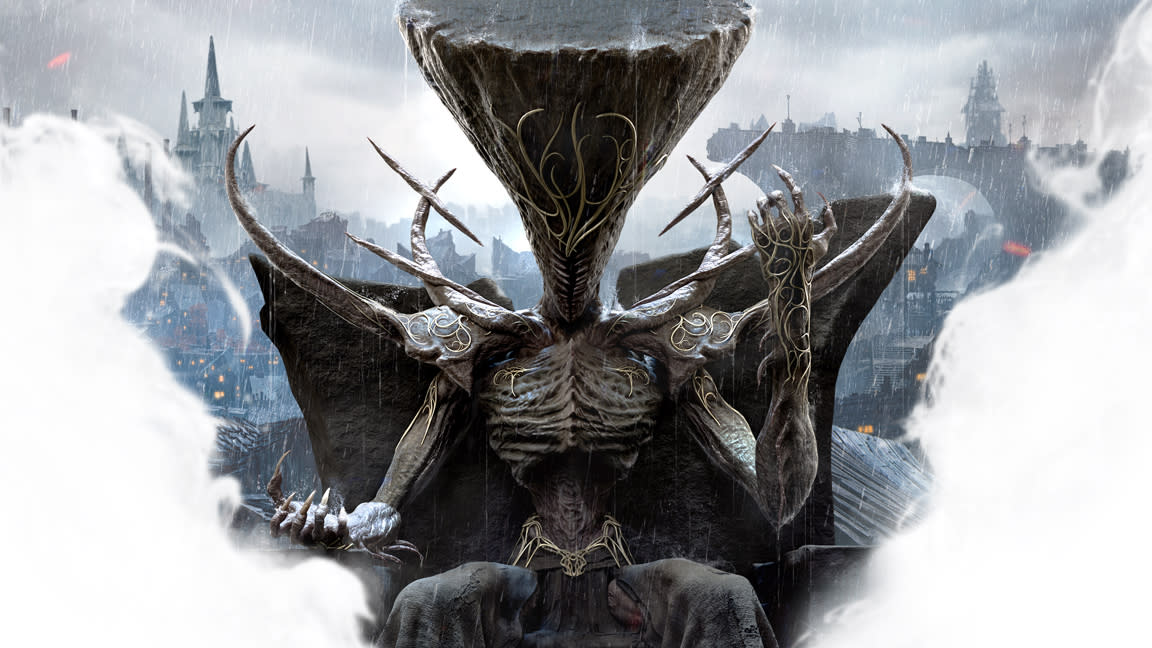
- Oops!Something went wrong.Please try again later.
Remnant 2 has been one of 2023's biggest hits, and it's fair to say this is a game that took many by surprise. Not, perhaps, fans of the original Remnant on PlayStation 4, and not those who loved the studio's previous work on the Darksiders series of games.
The studio has a history of creating evocative and original worlds, its artists are a talented bunch who have managed to eke out their own style in a genre dominated by the mediaeval body horror of From Software, in games like Elden Ring. Since its release in July Remnant 2, a co-op shooter in the Soulsborne genre, has sold over one million copies and its new DLC, The Awakened King, is being eagerly played by fans.
The world-building impresses, from the desolate gothic streets of Losomn to the lush green forest realm of Yaesha, there's variety here that constantly impresses. Creatures are complex, boney or plant-like; made from roots and limbs. To discover how this was created, I sit down with Gunfire Game's principal artist Colin Post and 2D and 3D artist Josh Gudmundsen, to find out how the world of Remnant 2, and its monsters, were made.
Making Remnant 2, embracing Unreal Engine 5
Work began on Remnant 2 back in 2018, using Unreal Engine 4. According to Colin Post the team started conceptualising the game around 2019. Unreal Engine 5 was still on the horizon, and like many in the industry, they initially regarded it with curiosity, but there wasn't a plan to use the as-yet-unreleased tech; traditionally upgrading from one engine to the next is a lengthy process.
Post tells me the team "didn't think we would ever move over to Unreal 5" because usually it's too costly and too much work. Or they look at the new features and tools and simply think, "Oh, that's really cool, but it's not really ready yet for production".
The shift to Unreal Engine 5, however, became a reality midway through the project, in around 2021. Post explains, "We knew we couldn't use all the features yet. You know, because a lot of them were still very new. The biggest thing we wanted to try using was Nanite". (Read more about Nanite in our Unreal Engine 5 explainer.)
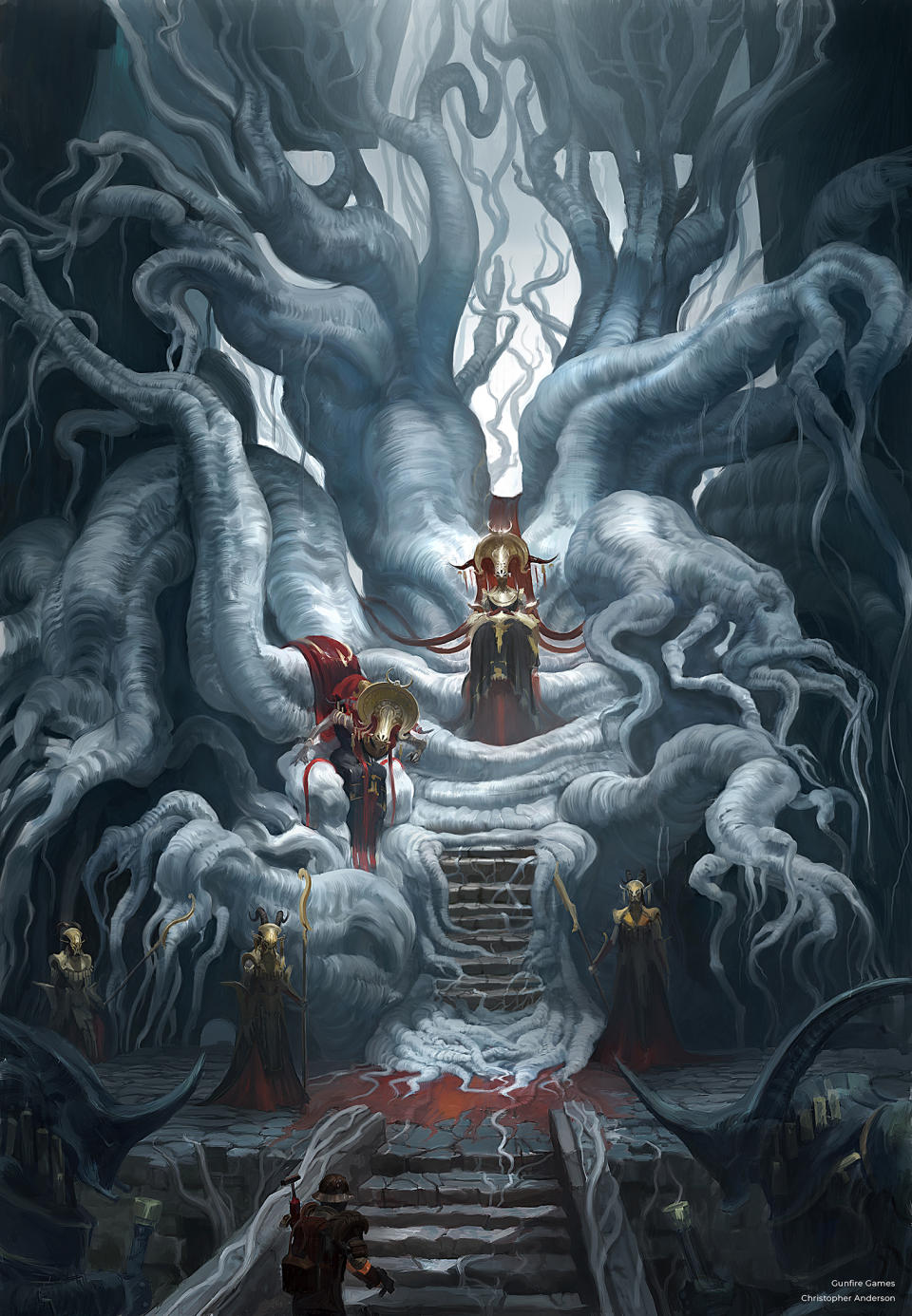
Navigating the Nanite, finding the balance
The team, constrained by time and size, decided to focus on utilising Nanite for enhanced performance and higher poly counts. Post notes, "So we just kind of said, 'You know what, we're going to use Nanite. That'll help our performance, and we could use higher poly counts."
Despite the challenges, the decision to transition to Unreal Engine 5 enabled the team to push the boundaries of what was possible in terms of graphical fidelity and artistic expression, particularly for a small-to-medium-sized developer like Gunfire Games.
While Nanite presented an opportunity to create intricate details with higher poly counts, the team soon realised that going overboard with it could have unintended consequences, especially on less powerful platforms like the Xbox Series S.
Post reflects on this, laughing he says, "Honestly, we got [too excited], we actually kind of went a little too overboard, I think, with looking at how to use Nanite, in the beginning. We were like 'Wow, we can go crazy, now we can use a million poly trees and all this stuff, and we kind of found out near the end of production that that wasn't really true."
Honestly, we got [too excited], we actually kind of went a little too overboard, I think, with looking at how to use Nanite
Aside from learning how and where to curtail their ambition for which tools to use, and particularly "the artists were very excited," laughs Post, switching up from Unreal Engine 4 to Unreal Engine 5 was "almost transparent". Post describes how one day you open the new engine and it has the same UI and the same workflow and the team's artists really didn't need to alter their approach. "It was all very seamless," says Post.
Ultimately Gunfire Games found itself at the forefront of game development, adopting features and technologies that were still in their early stages. Post acknowledges, "We thought, surely there are other Unreal Engine 5 games coming out, but we didn't realise how much on the tip of the spear we were, you know, we were doing things that weren't really proven yet, which we thought was surely tried and true, but we kind of realised that 'Oh, wow. We're like the pioneers here'."
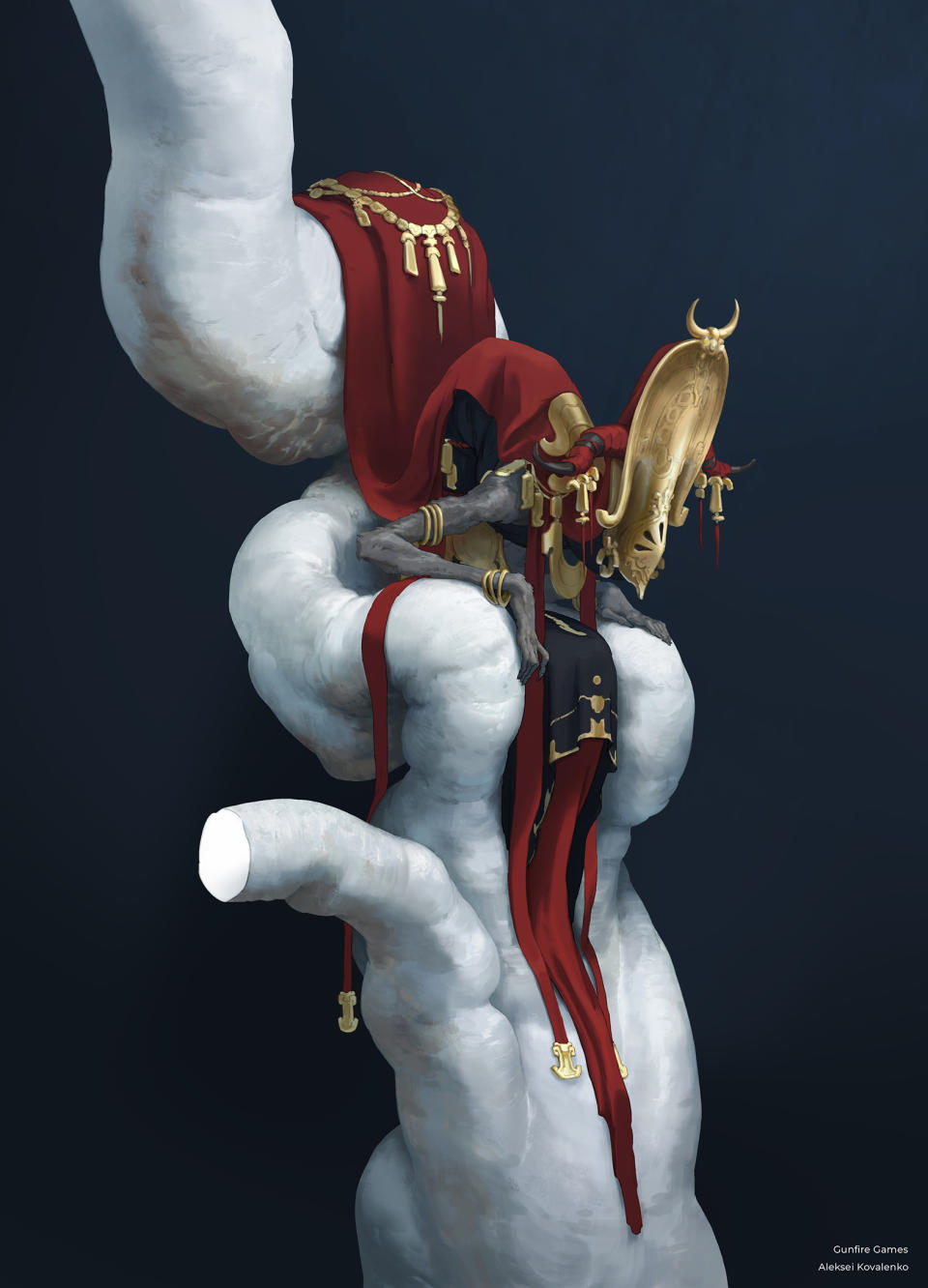
Crafting the unique style of Remnant 2
I ask Post to describe the art style of Remnant 2, and he replies, "That's something we've often struggled internally to quantify," but he does mention Dark Souls and God of War as games the team aimed to emulate, not so much in style but in approach. Post tells me Remnant 2 is characterised by a dark and gritty aesthetic but with "a sense of wonder".
He also tells me he has a personal mantra, particularly when it comes to weapon and armour models, "A lot of what we're looking for is just dialling in just the perfect amount of shitty," because there's an apocalypse somewhere in the game at all times. "Basically everything is just kind of not great, so we have to keep that in mind."
We wanted to have this sense of wonder where you're put into a space where you don't really know what is actually happening
2D and 3D artist Josh Gudmundsen joins in, "Everything looks like it came from some sort of a junk heat to an extent. There's some nicer items, but they're never fully polished. Everything has to be kind of fucked up. That helps unify them."
One thing the art team needed to wrangle with was the game's premise of having three distinctly different, quite exotic worlds to explore, explaining how to bring the tone together they first thought, "let's ground the player when they start," says Post, with a familiar apocalyptic Earth, and players of The Last of Us will feel right at home, before the game, "quickly goes down the rabbit hole and goes into this very different bizarre kind of fantasy game".
Post smiles as he revels in the bait and switch Remnant 2's design offers. The true look and feel of the game is "almost hidden from the player at first," he smiles, adding how internally the team ultimately gravitates towards a the "player going, 'What the fuck is that?'… We wanted to have this sense of wonder where you're put into a space where you don't really know what is actually happening".
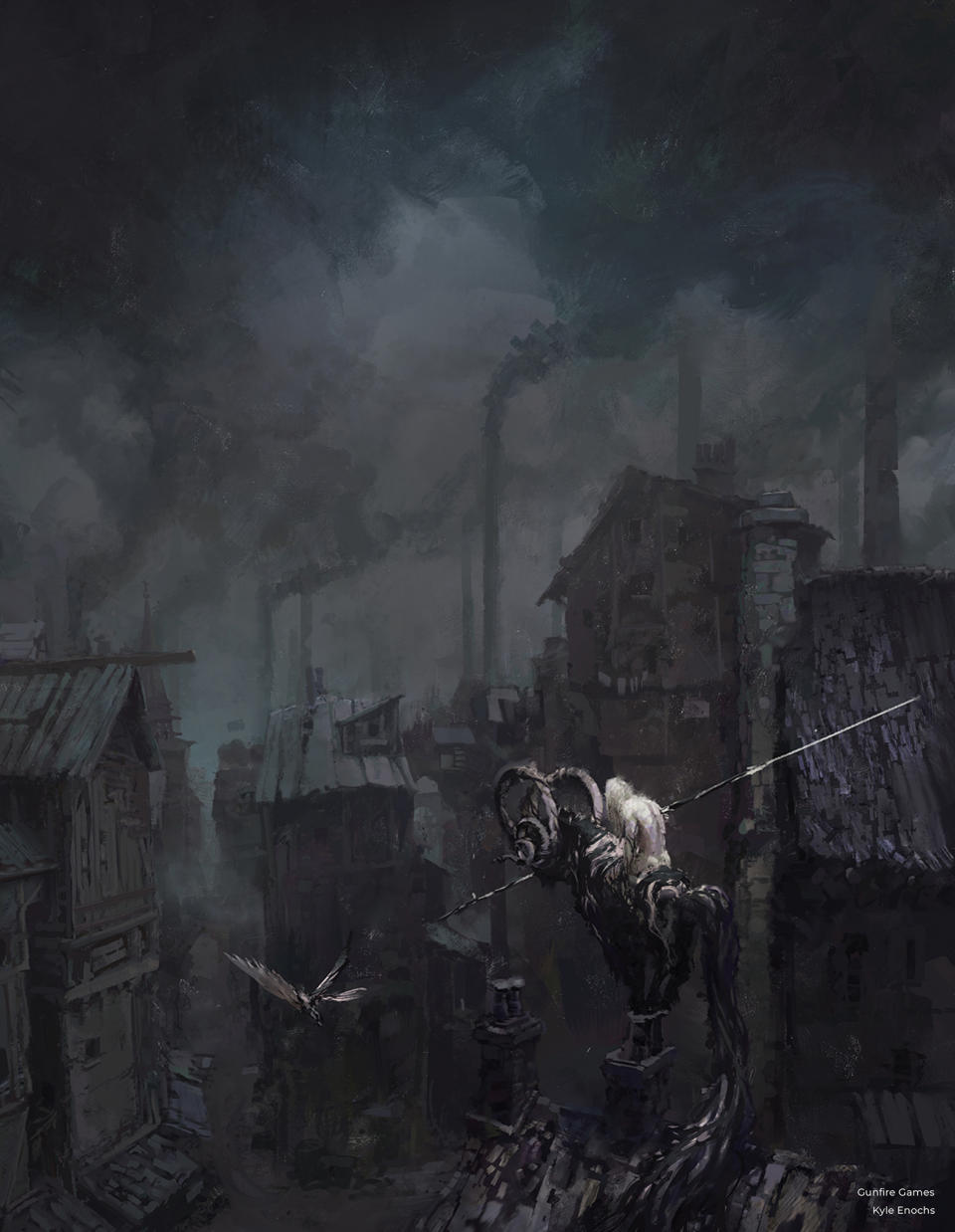
The team's desire to unsettle players feeds into the environment design. Post revels in telling me how there are elements in the environment that are "just there to make it feel otherworldly". He adds: "You're clearly not on earth anymore, but we don't really ever tell the player why; like, what some of that stuff is or why there are just sort of giant, weird things coming out of the wall."
For the studio's artists this approach was freeing and enabled them to really have free reign to let their imaginations run riot. Post tells me how, as long as the artists pulled their visions back under the umbrella terms of "dark, mysterious, and threatening" almost anything was possible when it came to designing the worlds and creatures of Remnant 2.
There had to be some technical rules to draw everything together, and Post reveals how lighting, colour grading and the texturing of assets all had to be consistent. Megascan textures were used as much as possible for consistency, as well as a similar approach to sculpting and detailing, and of course diligent editing to ensure everything feels the same. Post reflects, "it's always the hardest thing to do, to make the game look like it was made by one artist even though it was made by 80 artists".
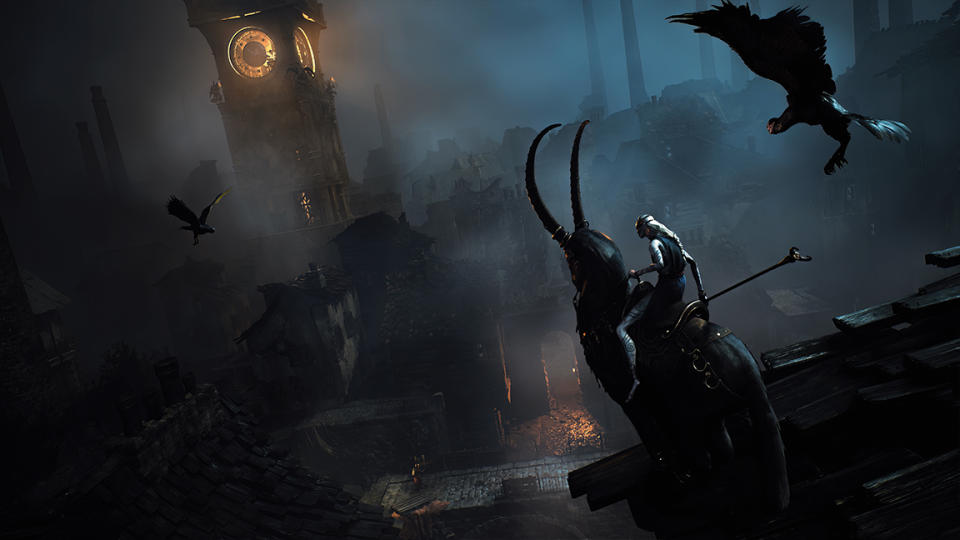
Adding colour to the apocalypse
Colour was also used to draw environments together, with a colour script created to unify the look and tone of each world. Often the colours would be defined early in the concept process and run with. Post also describes how the team uses "small points of a very focused colour" to bring life to the desaturated colour schemes of an environment. Players will have noticed how the grey-green subdued world of the forest world of Yaesha is shot through with tiny points of orange; it's an effective and adroit use of colour.
When talk turns to creature design, Josh Gudmundsen laughs when I ask if the team had any rules to follow, and says, "No… the concept team will do some of the craziest shit, and then we just look at it and go 'we'll figure it out'. Just looked like the final boss of the game, it's like a root creature inside of a larger root creature that uses parts of its body as weapons. You know, it's pretty wild".
Give us something crazy and we'll figure out how to make it work
Josh smiles and tells me working as a character artist on Remnant 2, "you're never going to get bored". The challenge of his job was working out how to make the wild concept designs work in the game, and indeed he reveals how the only creature modelling rules came from "the mundane" elements, like when a metal piece of armour joins another metal element, and wouldn't bend or connect in the real world.
Amidst all the odd creatures and tree-within-tree monsters the team focused on a sense of reality to sell the designs, "the little technical things," says Gudmundsen, "something that might look a little off to the eye". But ultimately, he says of the concept team, "Give us something crazy and we'll figure out how to make it work".
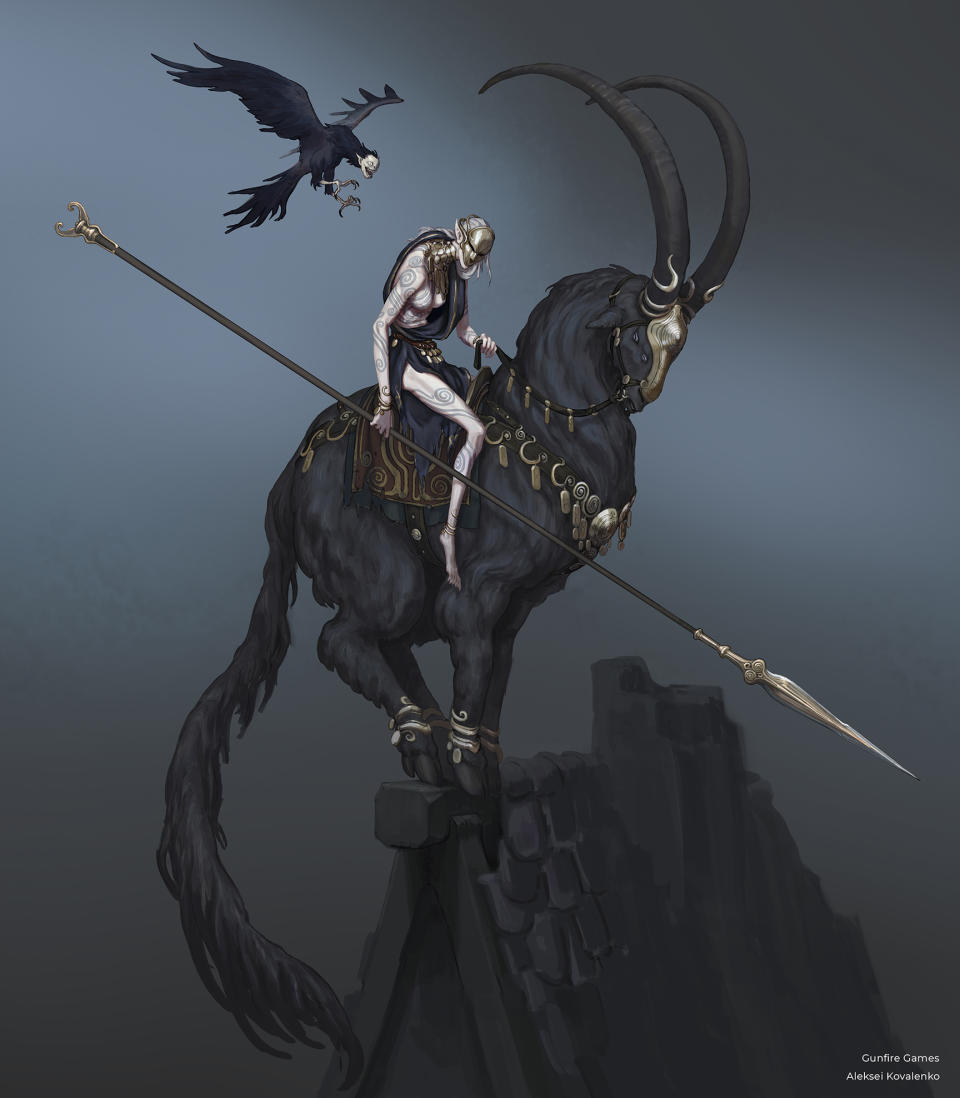
This sense of modelling around the details, and how these creatures or enemies could work and move in the real world sells the game's fantasy. "A lot of our big crazy monsters are built on the details," offers Gudmundsen who says he loves "solving little things' in a model or sculpt. This can go as far as debating the realism of a wood grain in a tree creature, but then he laughs at the absurdism of it all, saying "because the creature itself is like a fucking 70ft tall flying… whatever".
Technically the modellers work in a traditional sense, creating proxies from the concept art to get the basic forms, and this is then handed to the animation team. Interestingly both Post and Gudmundsen says there's no one tool or software that is preferred (other than the files need to be compatible with 3ds Max), and while the the standard workflow is to use 3ds Max, ZBrush and Substance Painter, "Different artists can use different tools" and Gudmundsen tells me he's keen to try Blender, "because it seems like it's the future".
A lot of our big crazy monsters are built on the details
What did change on a technical level goes back to Nanite and UE5, and how the team learned the limits of what it can do; for example Post reveals how artists thought they could load in ZBrush files, "which you can't do". But he does tell me Nanite changes the team's approach to materials, "we have pseudo layered material system now," he says, "we make these masks to blend different materials together […] it's better to not put so much detail into our normal maps when on your base mesh, leave that detail for your tiling layers that you're going to layer on top".
Ultimately, Post clarifies, this is a break with the past. Whereas an artist would do everything in ZBrush and make their sculpt as detailed as possible it's no longer needed with Gunfire Games use of Nanite, "because the material itself is going to have a lot of that detail and we don't want them fighting with each other. It's been a learning curve, but I think we've hit our groove now".
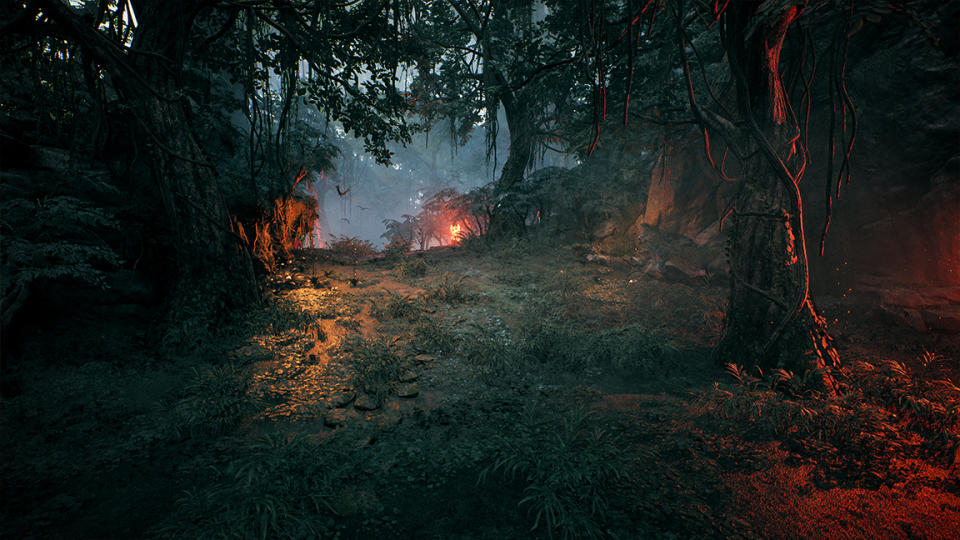
Lighting in Remnant 2 - unleashing Lumen
While the team decided not to fully embrace Lumen for the main game due to its early stage in development, instead focusing on Nanite, the technology played a crucial role in enhancing certain aspects of Remnant 2. Post highlights its impact on dynamic lighting, stating, "We were really excited to try and use Lumen as much as possible, but we just found out early on that Lumen works against the style we wanted to use with the dark atmosphere."
The team, however, leveraged Lumen for specific scenarios, especially those involving more controlled environments. The decision to carefully implement Lumen highlights the art team's need to support the game's distinct visual identity. Post reflects on this, telling me: "I think that it was a good call on our part to not use it everywhere, because we wanted to have that dark atmosphere where you can't see too far ahead of you, and if we had Lumen everywhere, you would be able to see way too far ahead of you [breaking the atmosphere]."
We just found out early on that Lumen works against the style we wanted to use with the dark atmosphere
This is a refreshing insight from Post as the buzz around new features in Unreal Engine 5 can overshadow the realities of making those tools work for a game's art team and not overshadowing the design and creativity. Just because Gunfire Game's artists had access to real time lighting in Lumen, it would have broken the finely honed atmosphere if it were simply used without care.
The development of Remnant 2 was not without its share of challenges, from navigating the intricacies of a new game engine's features to addressing platform constraints. Post emphasises the importance of collaboration, stating, "It was tough, especially because there were so many moving pieces. And we're a relatively small team. So if one person is out of commission, it kind of puts a lot of strain on everybody else. But we had a lot of good people."
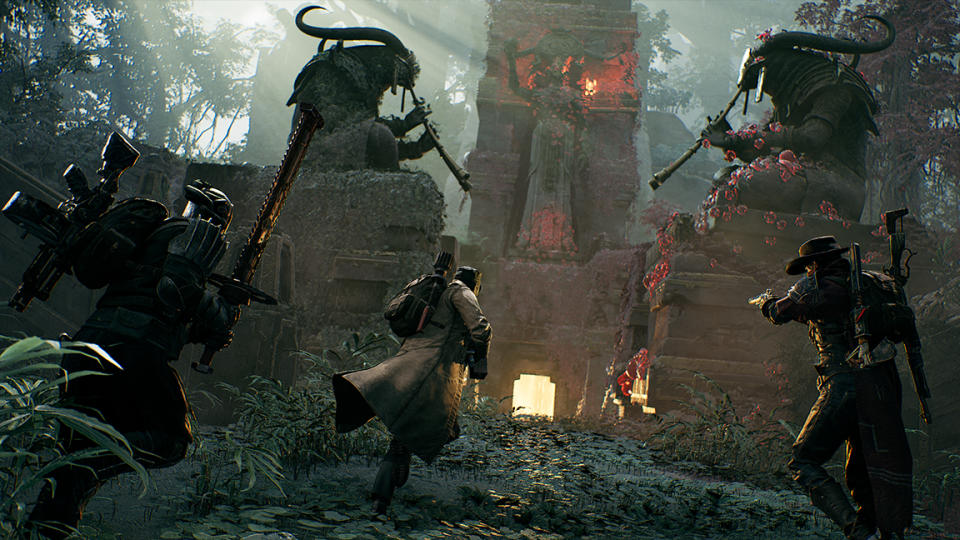
Working at Gunfire Games
The studio is always on the lookout for new 'good people' too. As our time draws to an end Post sheds some light on what he looks for in an artist's portfolio. "I look for people that are able to work off of a fairly, or a reasonably, loose concept, and interpret it in such a way that is going to be cohesive with the rest of the project," he tells me.
Gudmundsen jumps in, "if they submitted a portfolio where they have the concept displayed next to the work, I can look and see how their general conceptions of proportion and form work." He explains how many artists can be technically brilliant, understand the software perfectly and know all the tricks, but they can be let down by "their eye", the artistic knowledge of how form, proportion and volume work.
I think that's really what we try to hire, is the problem solving artists
"I'm always really just looking for problem solvers," adds Post, who says an artist at Gunfire Games may not always get the detailed picture to work with, maybe a scribble on a scrap of paper to turn into an environment. "There's a whole bunch of unknown things here, you know, you're going to have to use your artist's brain and figure out what that is; I think that's really what we try to hire, is the problem solving artists."
So, if you've loved Remnant 2 and admire the work and style of Gunfire Games, drop the team an email. The pair are coy with me about what the future holds, whether that's more DLC or a third game, but what's clear is they'll need more talented artists to bring even more complex worlds to life. Gunfire Games' small team could become a little bit bigger. "I think if we had a bigger team, we probably could have utilised Unreal 5 more," reflects Post, with one eye on what could come next.
Remnant 2 is out now for PlayStation 5, Windows and Xbox Series X/S. Both Remnant: From the Ashes and Remnant 2 are available to play on Xbox Game Pass. For more about its games and careers visit Gunfire Games.

